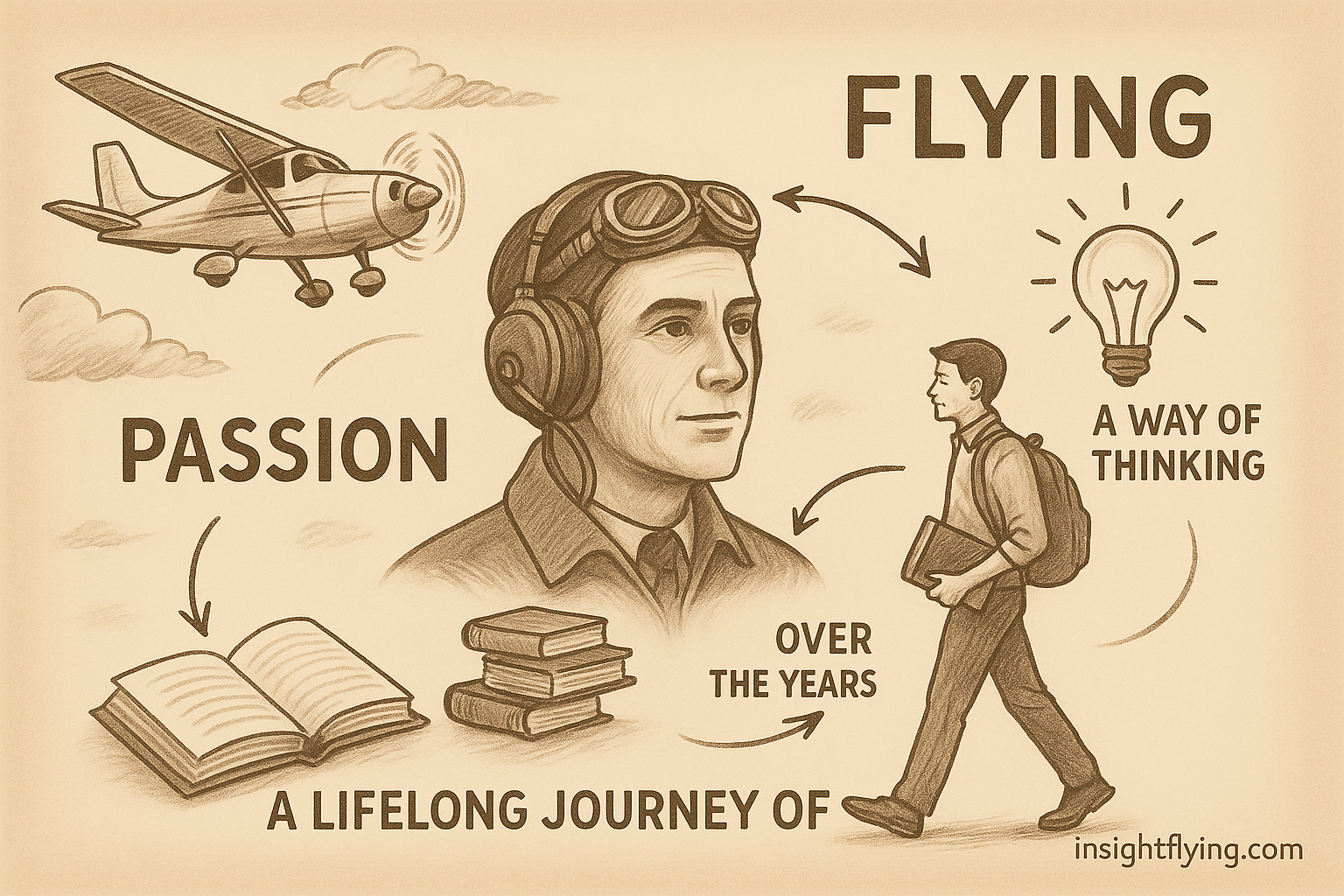การเข้ารับการสอบสัมภาษณ์นักบิน
การสอบคัดเลือกนักบินพาณิชย์ของสายการบินต่าง ๆ เป็นกระบวนการที่มีหลายขั้นตอน เพื่อประเมินความรู้ ความสามารถ บุคลิกภาพ และความพร้อมในการประกอบอาชีพที่มีความรับผิดชอบสูง กระบวนการโดยทั่วไปสามารถแบ่งออกได้เป็น 4 ขั้นตอนหลัก ดังนี้
1. การสอบข้อเขียน
ผู้สมัครจะต้องผ่านการทดสอบวิชาพื้นฐาน ได้แก่ คณิตศาสตร์ วิทยาศาสตร์ และภาษาอังกฤษ การสอบในขั้นนี้มีวัตถุประสงค์เพื่อประเมินความรู้ความเข้าใจด้านวิชาการที่จำเป็นต่อการเรียนการบินและการปฏิบัติการบินในอนาคต
2. การตรวจสุขภาพ
ผู้สมัครจะต้องมีผลการตรวจสุขภาพตามมาตรฐานที่กำหนด โดยส่วนใหญ่จะเข้ารับการตรวจที่สถาบันเวชศาสตร์การบิน กรมแพทย์ทหารอากาศ หรือโรงพยาบาลที่สายการบินกำหนด ทั้งนี้เพื่อยืนยันว่าผู้สมัครมีสุขภาพร่างกายและจิตใจที่เหมาะสมต่อการปฏิบัติหน้าที่นักบิน
3. การสอบสัมภาษณ์
การสอบสัมภาษณ์ถือเป็นขั้นตอนที่สำคัญในการประเมินคุณสมบัติของผู้สมัคร โดยคณะกรรมการผู้สัมภาษณ์ (ซึ่งอาจเป็นนักบินอาวุโสหรือผู้แทนของสายการบิน) จะทำการประเมินทั้งด้านบุคลิกภาพ ทัศนคติ การสื่อสาร และความเหมาะสมต่อการทำงานในองค์กรการบินพาณิชย์
4. การสอบความถนัด (Aptitude Test)
การทดสอบความถนัดจะมีรูปแบบแตกต่างกันไปตามแต่ละสายการบิน โดยมีจุดประสงค์เพื่อวัดศักยภาพทางด้านสติปัญญา การคิดวิเคราะห์ การตัดสินใจ และความสามารถในการทำงานภายใต้สภาวะกดดัน บางสายการบิน เช่น การบินไทย จะดำเนินการสอบโดยนักจิตวิทยาผู้เชี่ยวชาญจากต่างประเทศ
การบรรจุและเงื่อนไขทุนการบิน
ผู้ที่ผ่านการคัดเลือกครบทุกขั้นตอนจะได้รับทุนการฝึกนักบิน (Student Pilot หรือ Cadet Pilot Scholarship) และถูกส่งไปฝึกการบินกับโรงเรียนการบินที่สายการบินมีข้อตกลงไว้ การฝึกโดยทั่วไปใช้เวลาไม่เกิน 1 ปี หลังจากนั้นจึงเข้าสู่การบรรจุเป็นนักบินประจำสายการบิน
รูปแบบของทุนแตกต่างกันไปในแต่ละบริษัท เช่น บางสายการบินสนับสนุนค่าใช้จ่ายเต็มจำนวน ขณะที่บางแห่งอาจให้ผู้สมัครชำระค่าใช้จ่ายเองหรือหักจากเงินเดือนในอนาคต ทั้งนี้ สายการบินจะมีสัญญากำหนดระยะเวลาการทำงานขั้นต่ำเพื่อเป็นการตอบแทนทุนการฝึก
คุณสมบัติพื้นฐานของผู้สมัคร
โดยทั่วไป ผู้สมัครต้องมีผลสอบภาษาอังกฤษ เช่น TOEIC ไม่น้อยกว่า 650 คะแนน รวมถึงคุณสมบัติด้านอายุ การศึกษา และสุขภาพตามที่แต่ละสายการบินกำหนด รายละเอียดอาจแตกต่างกันเล็กน้อย จึงควรตรวจสอบข้อมูลล่าสุดจากประกาศของสายการบินโดยตรง
เกณฑ์การประเมินในการสัมภาษณ์
การสัมภาษณ์นักบินไม่ได้พิจารณาเพียงคำตอบที่ผู้สมัครให้เท่านั้น แต่ยังมุ่งเน้นการค้นหาคุณลักษณะเฉพาะใน 4 มิติหลัก ได้แก่
- Personal – บุคลิกภาพและลักษณะเฉพาะตัว
- Social – การปรับตัวและการทำงานร่วมกับผู้อื่น
- Ability – ความสามารถและศักยภาพในการเรียนรู้และปฏิบัติงาน
- Knowledge – ความรู้ด้านวิชาการและการบินที่เกี่ยวข้อง
ในมิติด้าน Personal มักใช้เกณฑ์เพิ่มเติม เช่น
- Motivation (แรงจูงใจ ความมุ่งมั่น)
- Attitude (ทัศนคติที่เหมาะสมต่อวิชาชีพและองค์กร)
- Appearance (บุคลิกภาพและภาพลักษณ์ที่เป็นมืออาชีพ)
- Judgment (ความสามารถในการตัดสินใจอย่างมีเหตุผล)
- Self-knowledge (การรู้จักและเข้าใจตนเอง)
เกณฑ์เหล่านี้ช่วยสะท้อนถึงความพร้อมของผู้สมัครต่อการปฏิบัติหน้าที่ในอาชีพนักบิน ซึ่งเป็นอาชีพที่ต้องอาศัยทั้งความรู้ ความสามารถ และความรับผิดชอบในระดับสูง
✈️ สรุป : การสอบสัมภาษณ์นักบินไม่ใช่เพียงการทดสอบทักษะการตอบคำถาม แต่เป็นการประเมินภาพรวมของบุคลิกภาพ แรงจูงใจ และศักยภาพในการปฏิบัติหน้าที่ เพื่อคัดเลือกผู้ที่เหมาะสมที่สุดเข้าสู่สายอาชีพนักบินพาณิชย์
Pilot Interview Process
The selection process for airline cadet pilots is designed to thoroughly evaluate knowledge, aptitude, personality, and overall readiness for a profession that carries significant responsibility. While specific details may vary across airlines, the process generally consists of four main stages:
1. Written Examination
Candidates are required to complete tests in fundamental subjects, typically mathematics, science, and English. The objective is to assess the applicant’s academic foundation and ability to handle the theoretical aspects of pilot training and flight operations.
2. Medical Examination
Applicants must meet the required medical standards to ensure both physical and mental fitness for flight duties. Examinations are usually conducted at an aeromedical institute or a designated hospital, depending on the airline’s policy.
3. Interview
The interview stage is critical in evaluating the candidate’s personality, attitude, and suitability for a professional aviation career. Interview panels are typically composed of senior captains or airline representatives who assess communication skills, interpersonal qualities, and the applicant’s overall professionalism.
4. Aptitude Test
Airlines may employ different methods of aptitude testing, which are designed to measure cognitive ability, analytical thinking, decision-making, and stress management. For example, Thai Airways has historically engaged foreign aviation psychologists to conduct this stage of assessment.
Training and Employment
Successful candidates who pass all stages are awarded a Cadet Pilot Scholarship and sent to an approved flight training organization. The training typically lasts no longer than one year, after which the candidate is formally employed as a first officer with the airline.
Scholarship conditions vary across airlines. Some provide full sponsorship, while others may require candidates to self-fund their training or repay the cost through salary deductions after employment. In all cases, airlines require cadet pilots to sign a contract specifying a minimum service period to ensure return on investment.
General Entry Requirements
Most airlines set a minimum English proficiency level, often requiring a TOEIC score of 650 or higher (or equivalent). Additional requirements include age limits, educational background, and health standards, all of which differ slightly depending on each airline’s policy. Applicants are strongly advised to check the latest recruitment announcements for accurate details.
Interview Evaluation Criteria
The interview process is not limited to verbal responses; it is designed to assess the candidate’s overall suitability across four core dimensions:
- Personal – personality and individual traits
- Social – interpersonal skills and teamwork capability
- Ability – aptitude and learning potential
- Knowledge – academic and aviation-related knowledge
Within the Personal dimension, several sub-criteria are commonly considered:
- Motivation – genuine interest, determination, and commitment to the profession
- Attitude – mindset and professional outlook
- Appearance – professional image and overall presentation
- Judgment – ability to make sound, rational decisions
- Self-knowledge – awareness of one’s strengths and weaknesses
These factors, combined with the candidate’s performance in other stages of assessment, provide a comprehensive picture of their readiness to undertake the responsibilities of a professional airline pilot.
✈️ Conclusion: The pilot interview process goes beyond assessing academic skills or technical knowledge. It is a holistic evaluation of character, attitude, and aptitude, ensuring that only the most suitable individuals are selected to join one of the most demanding and responsible professions in the world.

Leave a Reply
You must be logged in to post a comment.